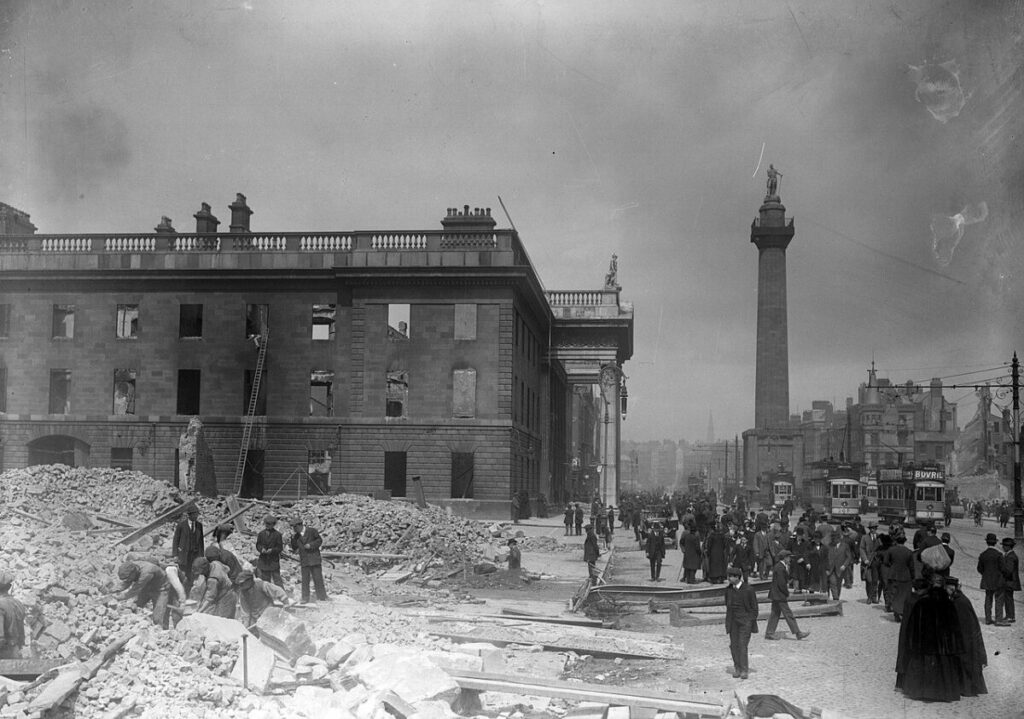
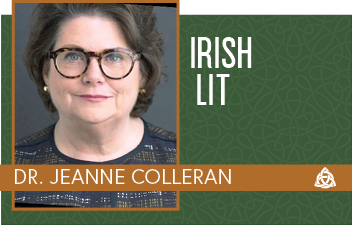
By Dr. Jeanne Colleran
In W.B. Yeats’ most famous poem, “Easter 1916,” he unstintingly praises the heroes of the uprising —MacDonagh, MacBride, Connolly and Pearse – even as he fears that a “terrible beauty is born.” The terrible beauty is oxymoronic: terrible, terrifying, perhaps catastrophic, yet also beautifully daring, heroically claiming independence through political martyrdom. For Yeats, the rebels’ sacrifice transformed even his own romantic rival, that “vainglorious lout,” John MacBride, who had won the hand of Maud Gonne.
The Easter Uprising is one of the landmark events that birthed the Irish nation, and it is one of the hundred-year-old events celebrated in Ireland during the Decade of Centenaries 2012-2023. These celebrations are coming to a close at the end of this year.
Arguably, the word “celebrations,” though there were many in Ireland, New York, London, and Gallipoli, is not the right word given the turbulence and violence of the historic events. Consider the whiplash events of a hundred years ago:
In this column, I want to reflect on what the commemorative programs mean for the Irish nation, the Irish diaspora, and for Irish Americans. Specifically, the program was conceptualized to emphasize collaboration, to affirm differences in historical memory, and to expand the historical record. As a State-sponsored activity, guided by an august group of advisors, the remembrance is a hybrid of celebrating the freedom and democracy achieved for the Republic of Ireland while also critically reviewing how the events affected various sectors of Irish society differently. It does not want to evade the suffering and loss of life during the Civil War nor the difficult compromises of the partition of North and South.
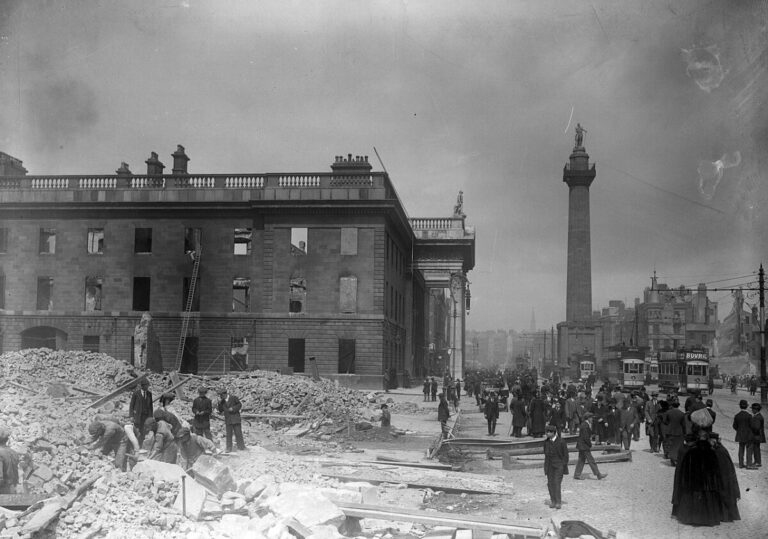
Clearly, everyone involved in the planning process knew the challenges of engaging with the period that began with a fervent desire to break from the colonial strictures, but which ended with a divided island. Secondly, each of the events involved conflicts from within sectors of Irish society (landowners and landless; church and laity; women and men, etc.), and thirdly, while these conflicts predicated the formation of modern Ireland, some remain unsettled.
The commemoration could not be simplified into “preserving Irish culture” as part of the heroic struggle of Irish independence. Led by Maurice Manning, who served as Chancellor of the National University of Ireland, President of the Human Rights Commission, and a member for over twenty years of the Oireachtas, the Advisory Group issued three statements, all of which establish, assess, and re-affirm the objectives of the commemoration.
For all students of Irish history, these documents are key to understanding the foundational events of the modern Irish state. For those interested in how any inclusive and respectful national conversation can take place about deeply divisive issues, the documents are equally essential.
The American bicentennial celebration was framed as a celebration of the virtues of American democracy that led to independence from England. Imagine if the scope of the bicentennial was broadened to include the American Civil War and the Civil Rights Movement? There could be no such simple, self-affirming message. Some of the current arguments about what can be taught in schools signal a resistance to re-exploring events that might disrupt or complicate our “great’ or “heroic” national stories.
In comparison, the Irish commemoration based itself on objectives founded on a vigilant premise that the past continues to unspool, affecting present society, government, and culture. The Irish government’s goals were:
The commemoration’s purpose was not to achieve final consensus about how to interpret the historical events nor to promote a false and exclusionary version of the path to nationhood. Much more important was the promotion of respect, reconciliation, and peace. Note that commemorative activities took place in Belfast and Derry as well as other sites in Northern Ireland.
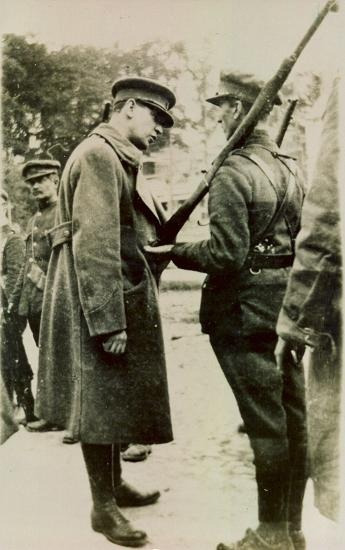
To give order to the diverse activities of the commemoration, the government/advisory group suggested four thematic strands. The State Ceremonial Strand focused on a limited number of national activities around the most consequential events. For example, in September 2022, President Michael D. Higgins, then Taoiseach Micheál Martin T.D., and then Tánaiste Leo Varadkar T.D., came together to remember all those who died in the Civil War during an evening which included traditional Irish and classical music, poetry and song.
Further occasions to reflect on the costs of the Civil War (or other events) were encouraged through the Community Strand. The Creative Imagination Strand prompted traditional, recovered, and new artistic renderings of key events and dynamics in the founding years. The Historical Strand reminded participants of diverse interpretations of the same event, the value of local histories (as opposed to “official” histories), the discovery of new historical artefacts, and a reexamination of primary sources.
Taken together, the four themes encouraged nation-wide observances from large State sponsored events to occasions in every town and village. It produced an extraordinarily rich set of new resources from primary sources to new historical interpretations.
These deeply illuminating accounts can be accessed through the Decade of Centenaries website, through the National Archives, and through Comoradh, the newsletter for the Irish abroad.
Additionally, there are many websites devoted to local commemorations, such as the ones in Monaghan and Louth. Programs developed by RTE and the National Museum of Ireland are available.
It is an extraordinary achievement to bring an entire nation together to share in intense reflection, openness to new understandings, and a communal production of archives and art. It is not possible to overstate the immense value of these new frameworks and new resources.
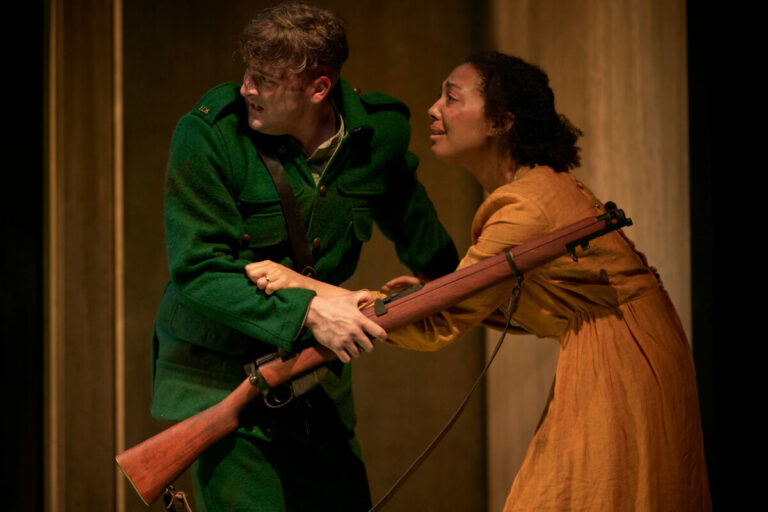
Sean O’Casey’s Dublin Trilogy, comprising his three plays that span the Easter Rising, the War of Independence, and the Civil War, is the only set of plays written and staged during these violent but foundational times. Druid O’Casey, the famous Galway Theater, stages all three plays in a single day (or across three days), the first company to do so.
Tickets are now available for the production in New York City or in Ann Arbor, Michigan.
The plays are witty and fast-paced, marked by O’Casey’s constant concern about how large events arrive at their destination on the backs by those most adversely affected. Highly recommended and deeply enriching when seen while examining new documents from the Decade of Centenaries.
Find this column and others from the October 2023 issue here!
*Dr. Jeanne Colleran, Ph.D is Professor Emeritus of English. At John Carroll University she served as Dean of the College of Arts and Sciences and as the Provost and Academic Vice President. At Loyola University of Chicago, she worked with the Loyola Rule of Law Institute in the School of Law.
A scholar of modern and contemporary literature, she has published a book, an edited collection, and some three dozen articles concerning literature and society. She has lectured in Ireland, South Africa, England, United States, France, Canada, Belgium, and The Netherlands. She taught undergraduate and graduate courses in Irish Literature. She may be reached at [email protected]






Monthly newsmagazine serving people of Irish descent from Cleveland to Clearwater. We cover the movers, shakers & music makers each and every month.
Since our 2006 inception, iIrish has donated more than $376,000 to local and national charities.
GET UPDATES ON THE SERIOUS & THE SHENANIGANS!